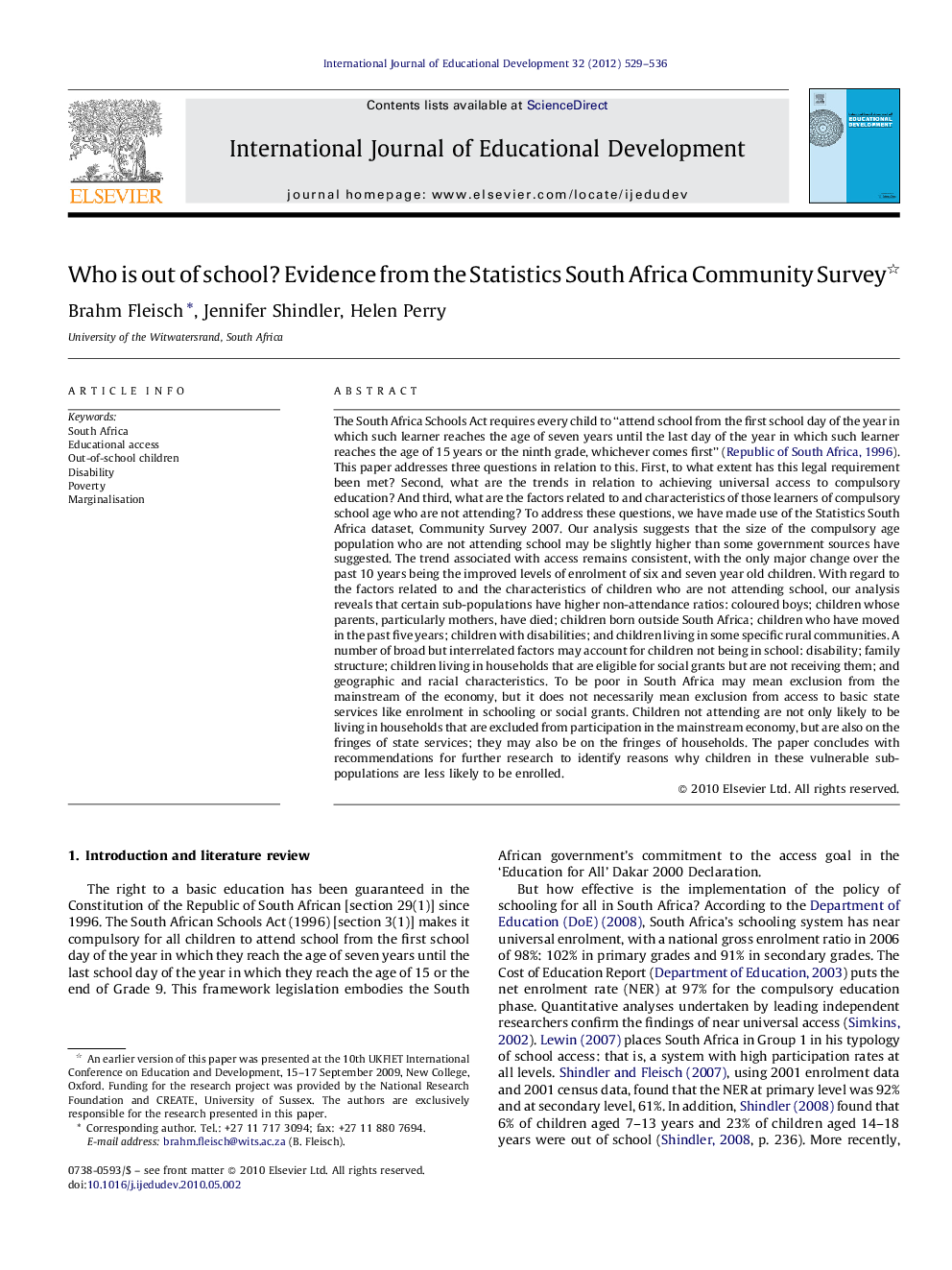| Article ID | Journal | Published Year | Pages | File Type |
|---|---|---|---|---|
| 356133 | International Journal of Educational Development | 2012 | 8 Pages |
The South Africa Schools Act requires every child to “attend school from the first school day of the year in which such learner reaches the age of seven years until the last day of the year in which such learner reaches the age of 15 years or the ninth grade, whichever comes first” (Republic of South Africa, 1996). This paper addresses three questions in relation to this. First, to what extent has this legal requirement been met? Second, what are the trends in relation to achieving universal access to compulsory education? And third, what are the factors related to and characteristics of those learners of compulsory school age who are not attending? To address these questions, we have made use of the Statistics South Africa dataset, Community Survey 2007. Our analysis suggests that the size of the compulsory age population who are not attending school may be slightly higher than some government sources have suggested. The trend associated with access remains consistent, with the only major change over the past 10 years being the improved levels of enrolment of six and seven year old children. With regard to the factors related to and the characteristics of children who are not attending school, our analysis reveals that certain sub-populations have higher non-attendance ratios: coloured boys; children whose parents, particularly mothers, have died; children born outside South Africa; children who have moved in the past five years; children with disabilities; and children living in some specific rural communities. A number of broad but interrelated factors may account for children not being in school: disability; family structure; children living in households that are eligible for social grants but are not receiving them; and geographic and racial characteristics. To be poor in South Africa may mean exclusion from the mainstream of the economy, but it does not necessarily mean exclusion from access to basic state services like enrolment in schooling or social grants. Children not attending are not only likely to be living in households that are excluded from participation in the mainstream economy, but are also on the fringes of state services; they may also be on the fringes of households. The paper concludes with recommendations for further research to identify reasons why children in these vulnerable sub-populations are less likely to be enrolled.
